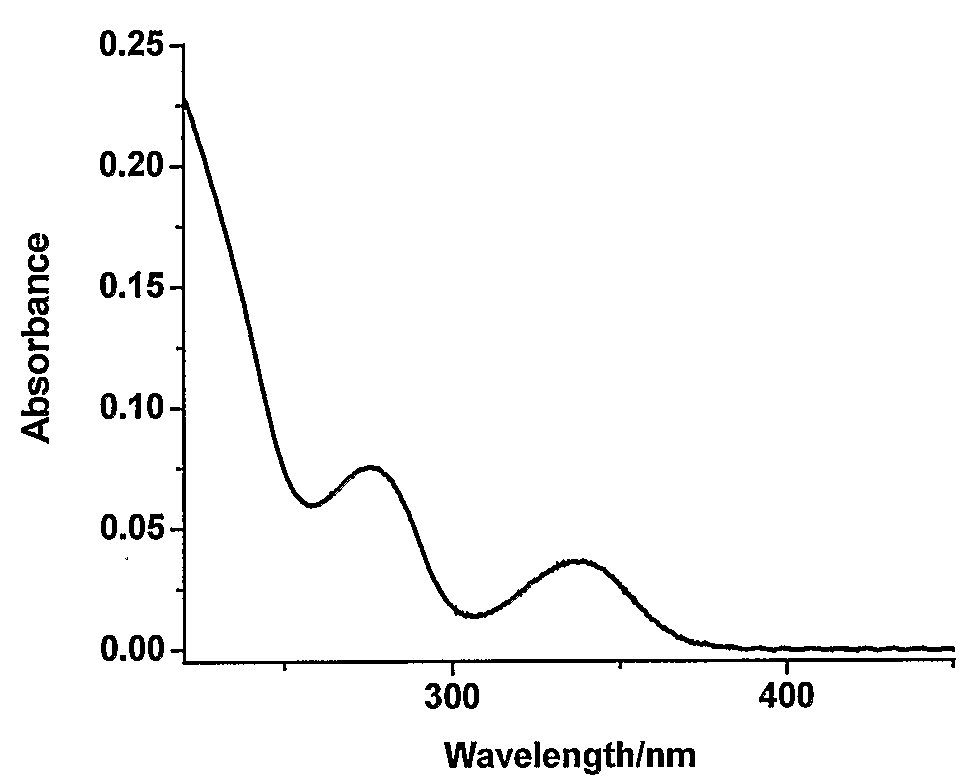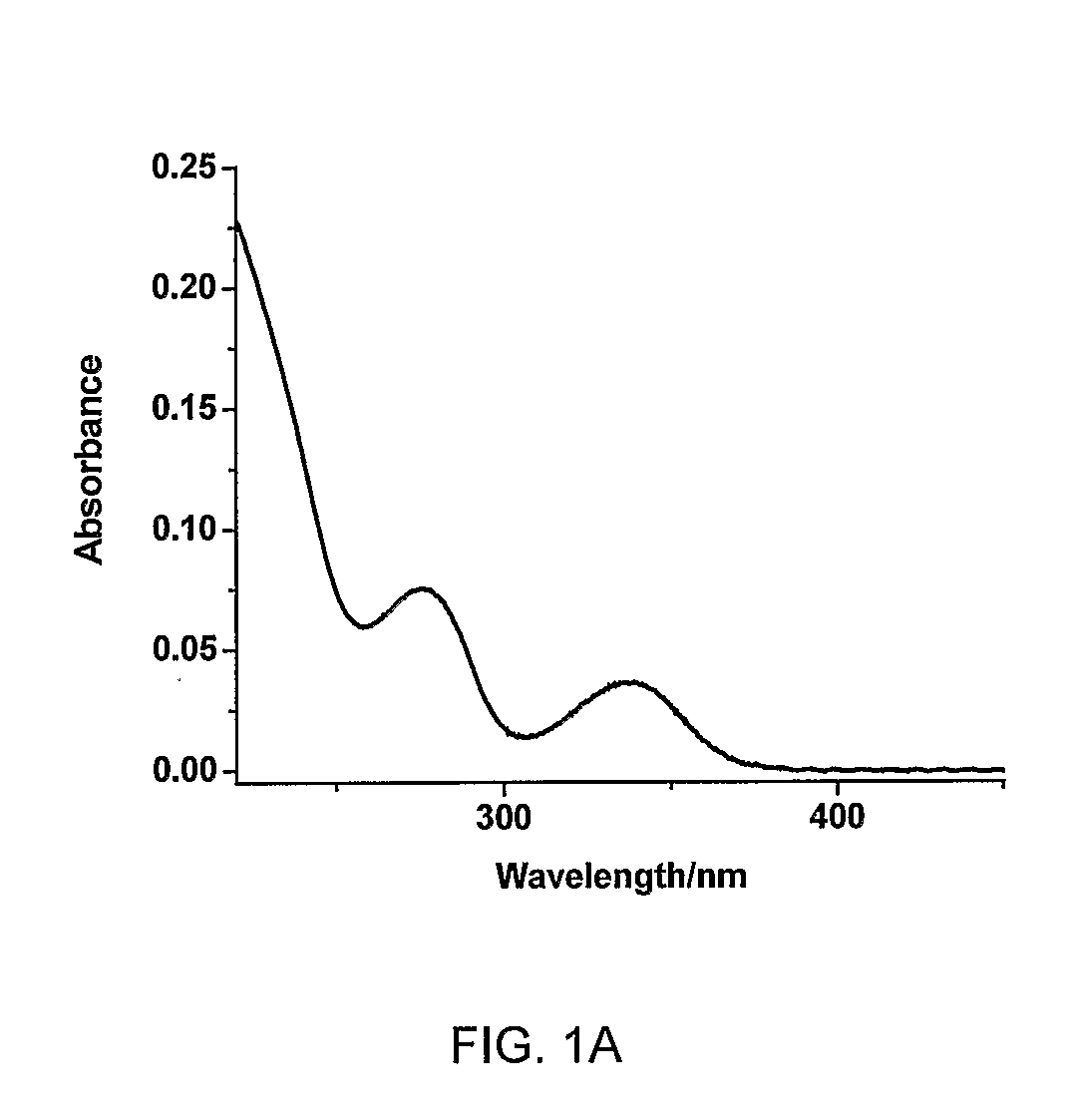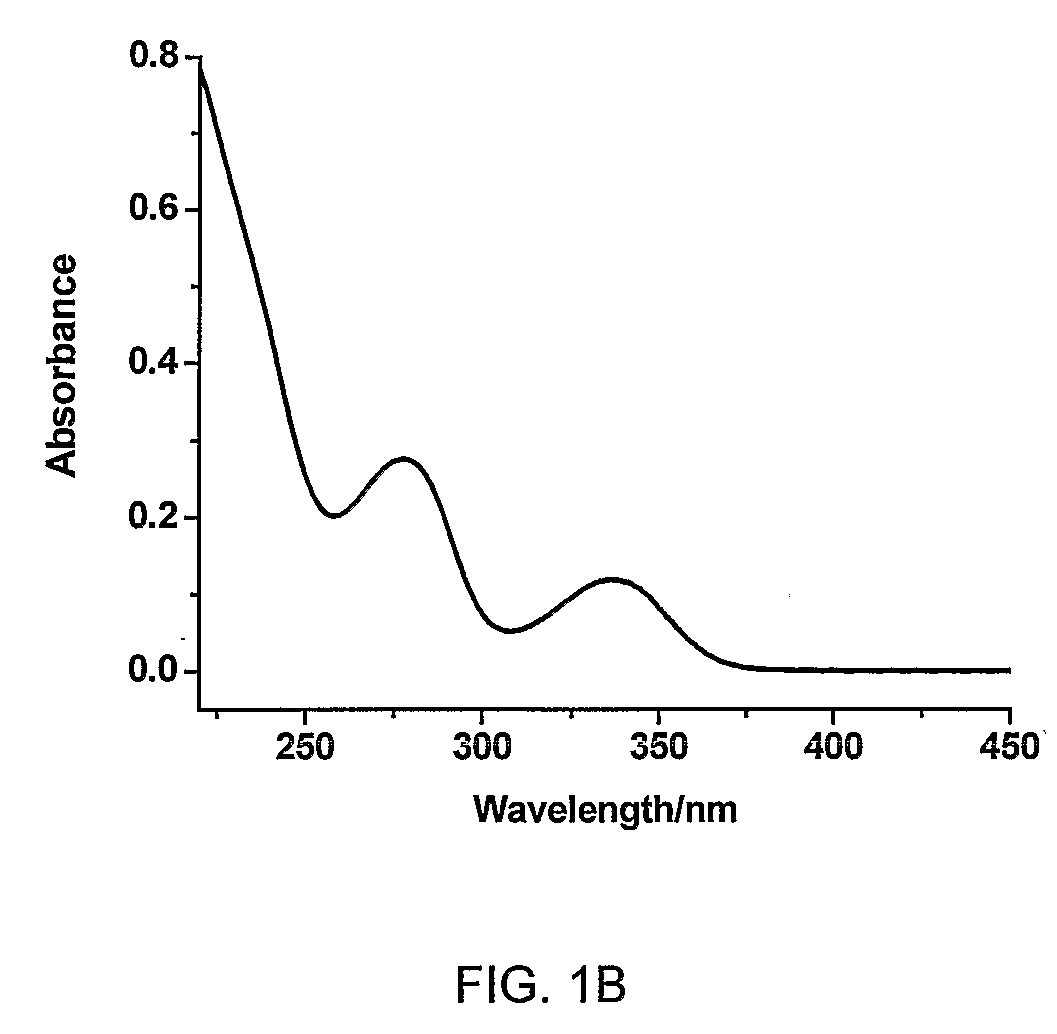Aromatic triamide-lanthanide complexes
- Summary
- Abstract
- Description
- Claims
- Application Information
AI Technical Summary
Benefits of technology
Problems solved by technology
Method used
Image
Examples
example 1
[0269]The synthesis of a 2-methoxy-1,3,5-tris-(2-thioxo-thiazolidine-3-carbonyl)-benzene core for a triamide of the invention is described. Scheme 1 set forth a synthetic scheme corresponding to the present example
1.1 Synthesis of 2,6-bis-hydroxymethyl-4-methyl-1-methoxybenzene (2)
[0270]To a solution of 2,6-bis(hydroxymethyl)-p-cresol (1) (250 g, 1.48 mol), NaOH pellet (90 g, 2.25 mol) in water (2 L), dimethyl sulfate (105 g, 0.84 mol) was added slowly while stirring. The temperature of the reaction mixture was maintained below 40° C. during dimethyl sulfate addition. Copious white precipitate formed upon standing overnight, the white product (150 g) was collected by filtration as the first crop. Dimethyl sulfate (31 g, 0.25 mol) was added to the mother liquor, and the mixture was stirred at room temperature for 5 days. During this time the volume of the mother liquor was reduced to half of its original volume and 70 g of product was collected as the second crop by filtration. Total...
example 2
[0282]The reaction of a 2-methoxy-1,3,5-tris-(2-thioxo-thiazolidine-3-carbonyl)-benzene core for a triamide with various amines is set forth. The example demonstrates that the core can be derivatized to form an amide that has diversity in the amine component. A representative synthetic scheme is set forth in Scheme 2.
2.1 Synthesis of 4-methoxy-N-methyl-3,5-bis-(2-thioxo-thiazolidine-3-carbonyl)-benzamide (6A)
[0283]To a slurry of the trithiazolide 5 (27.1 g, 0.05 mol) in dichloromethane (600 mL), a mixture of 2 mL methylamine solution (40% wt in water, d=0.902) and isopropanol (30 mL) was added dropwise over 48 h. The reaction mixture was applied directly onto a gradient flash silica column (1-5% methanol in methylene chloride). The desired product was obtained as a thick, yellow oil, yield 7.5 g (71% based on the methylamine). 12.8 g of unreacted starting trithiazolide was recovered during the separation.
[0284]1H NMR (500 MHz, CDCl3, 25° C.): δ 2.295 (d, 3H, J=4.5, NCH3), 3.390 (t, ...
example 3
[0306]Set forth herein are representative synthetic procedures for the conjugation of the activated a 2-methoxy-1,3,5-tris-(2-thioxo-thiazolidine-3-carbonyl)-benzene core to a polyamine core. An exemplary synthetic scheme is provided in Scheme 3.
3.1 Synthesis of Me4H(2,2)TIAM (8A)
[0307]To a solution of H(2,2)-amine (0.5 mmol) in CH2Cl2 (50 mL), 7A (0.81 g, 2.2 mmol) was added. The mixture was stirred until TLC indicated that the reaction was complete. The reaction mixture was applied to a gradient flash silica gel column (2-7% CH3OH in CH2Cl2), and the appropriate fractions were evaporated to dryness to give 0.50 g (82%) pure product as white foam.
[0308]1H NMR (500 MHz, CDCl3): δ: 2.753 (s, 4H, CH2), 2.775 (qint, br, 8H, J=7.5 Hz, CH2), 2.844 (d, 12H, J=5.0 Hz, CH3), 2.972 (d, 12H, J=5.0 Hz, CH3), 3.545 (q, 8H, J=6.5 Hz, CH2), 3.804 (s, 12H, CH3), 7.704 (d, br, 4H, J=2.5 Hz, ArH), 7.668 (t, br, 4H, J=2.5 Hz, ArH), 7.692 (t, br, 4+4H, J=7.0 Hz, AmideH), 7.842 (t, br, 2H, J=5.8 Hz, Am...
PUM
| Property | Measurement | Unit |
|---|---|---|
| Wavelength | aaaaa | aaaaa |
| Wavelength | aaaaa | aaaaa |
| Structure | aaaaa | aaaaa |
Abstract
Description
Claims
Application Information
 Login to View More
Login to View More - R&D
- Intellectual Property
- Life Sciences
- Materials
- Tech Scout
- Unparalleled Data Quality
- Higher Quality Content
- 60% Fewer Hallucinations
Browse by: Latest US Patents, China's latest patents, Technical Efficacy Thesaurus, Application Domain, Technology Topic, Popular Technical Reports.
© 2025 PatSnap. All rights reserved.Legal|Privacy policy|Modern Slavery Act Transparency Statement|Sitemap|About US| Contact US: help@patsnap.com



